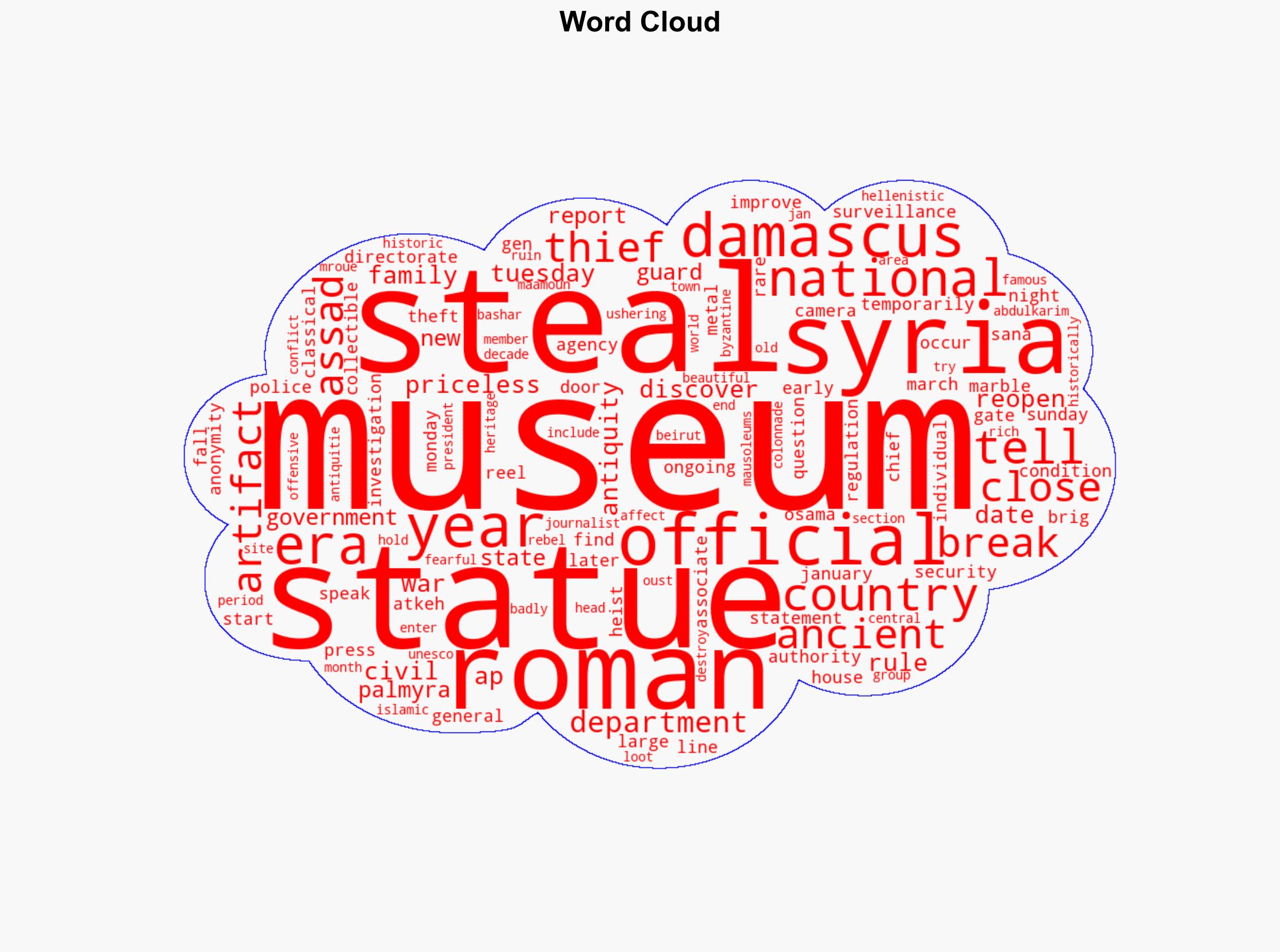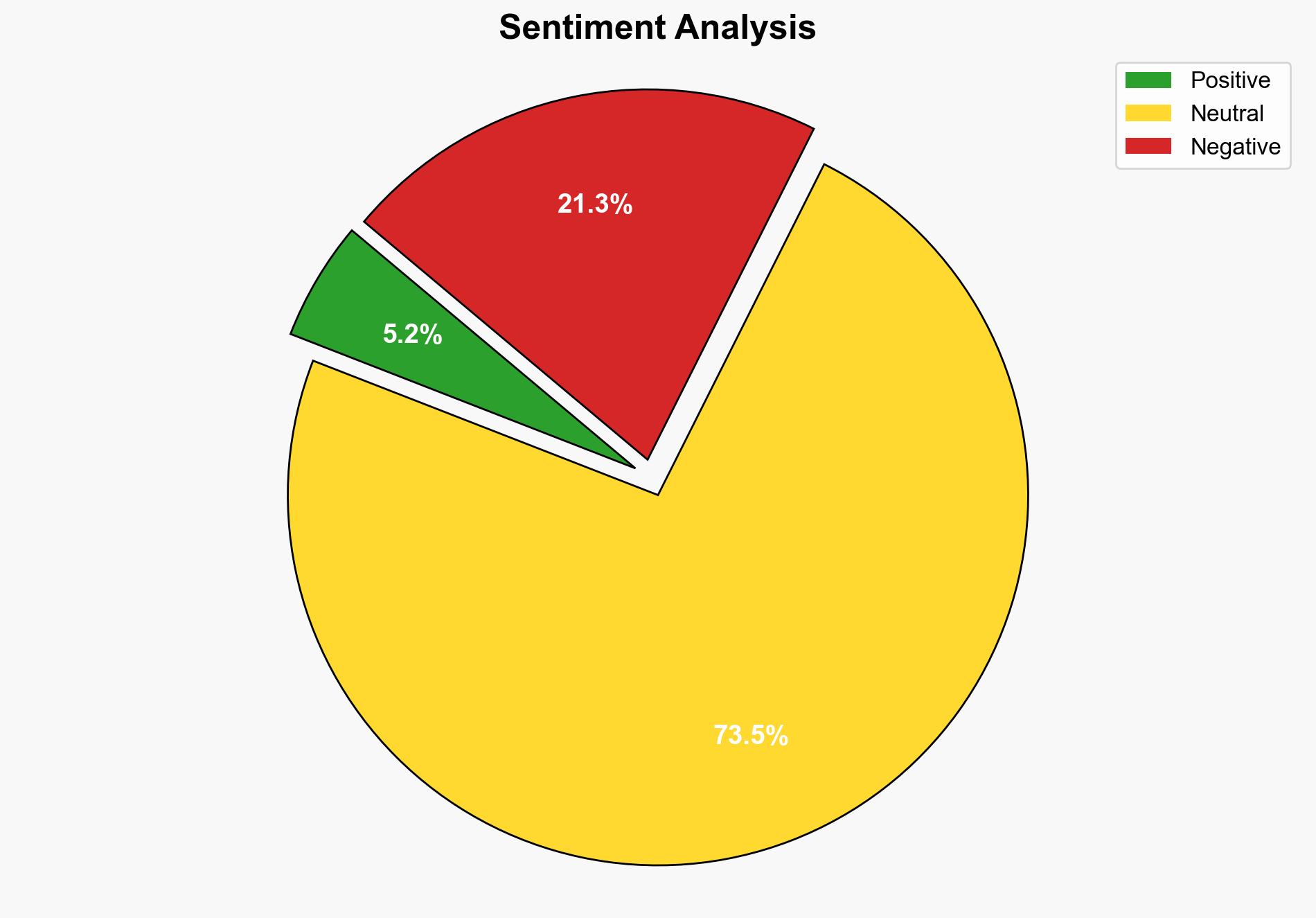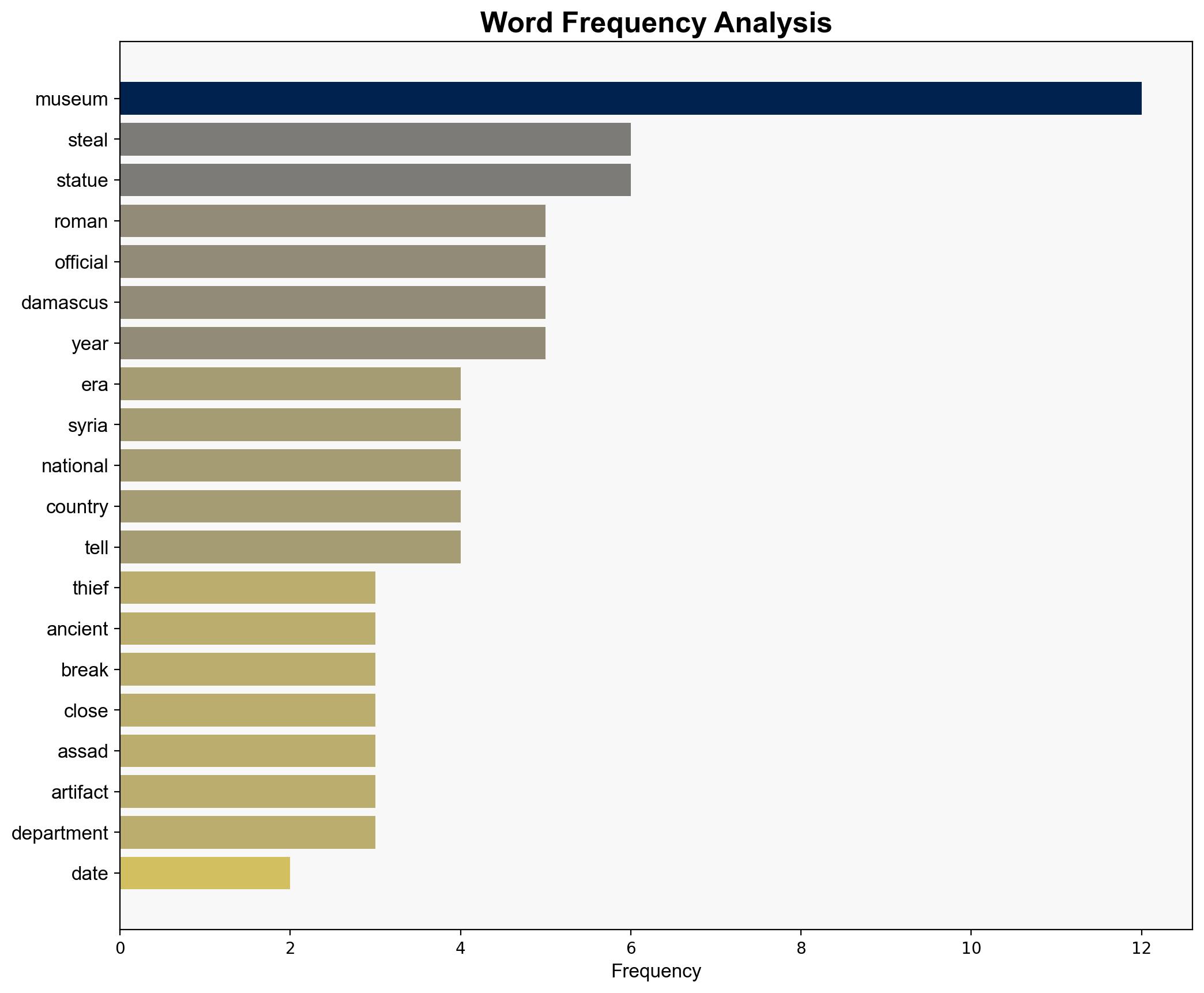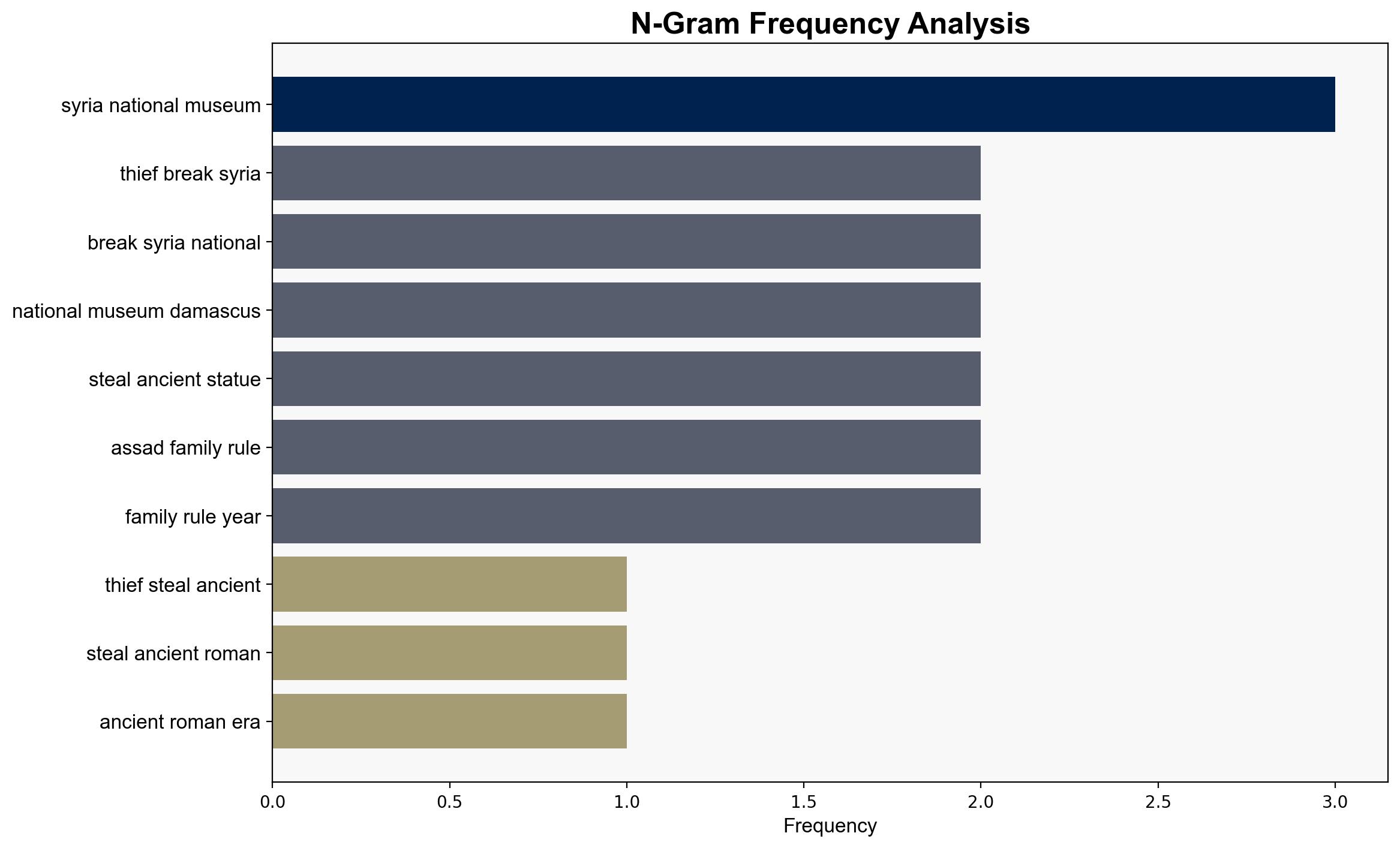Thieves steal ancient Roman-era statues from the national museum in Syria – ABC News
Published on: 2025-11-11
AI-powered OSINT brief from verified open sources. Automated NLP signal extraction with human verification. See our Methodology and Why WorldWideWatchers.
Intelligence Report: Thieves steal ancient Roman-era statues from the national museum in Syria – ABC News
1. BLUF (Bottom Line Up Front)
With a moderate confidence level, it is assessed that the theft of ancient Roman-era statues from the national museum in Damascus, Syria, is most likely the result of organized crime exploiting the ongoing instability in the region. It is recommended to enhance security measures at cultural sites and engage international agencies to track and recover stolen artifacts.
2. Competing Hypotheses
Hypothesis 1: The theft was orchestrated by an organized crime group seeking to profit from the black market for antiquities.
Hypothesis 2: The theft was politically motivated, intended to destabilize the current regime by undermining cultural heritage.
Assessment: Hypothesis 1 is more likely given the historical precedent of artifact thefts in conflict zones and the high value of such items on the black market. Hypothesis 2 is less likely as there is no direct evidence linking the theft to political motives.
3. Key Assumptions and Red Flags
Assumptions: It is assumed that the theft was carried out by individuals with knowledge of the museum’s layout and security systems. The assumption that the theft is linked to organized crime is based on the pattern of similar incidents in conflict zones.
Red Flags: The anonymity of officials speaking to the press and the timing of the theft during a period of political transition could indicate potential internal collusion or cover-up attempts.
4. Implications and Strategic Risks
The theft poses a risk of further cultural heritage losses in Syria, potentially fueling the illicit antiquities market. It may also embolden other criminal elements to target vulnerable sites. Politically, it could undermine efforts to stabilize the region by eroding cultural identity and heritage.
5. Recommendations and Outlook
- Enhance security protocols at cultural sites, including improved surveillance and access controls.
- Engage with international law enforcement and cultural preservation organizations to track and recover stolen artifacts.
- Best-case scenario: Rapid recovery of stolen items and improved security deters future thefts.
- Worst-case scenario: Continued thefts lead to significant cultural losses and increased black market activity.
- Most-likely scenario: Partial recovery of artifacts with ongoing risks to other sites.
6. Key Individuals and Entities
Brig. Gen. Osama Atkeh (Police Chief, Damascus), Maamoun Abdulkarim (Head of Government Antiquities and Museums Department)
7. Thematic Tags
National Security Threats
Structured Analytic Techniques Applied
- Cognitive Bias Stress Test: Expose and correct potential biases in assessments through red-teaming and structured challenge.
- Bayesian Scenario Modeling: Use probabilistic forecasting for conflict trajectories or escalation likelihood.
- Network Influence Mapping: Map relationships between state and non-state actors for impact estimation.
Explore more:
National Security Threats Briefs ·
Daily Summary ·
Methodology





